Trek road bikes explained: Everything you need to know about the brand's road and gravel ranges
From the Madone to the Domane+, find out about Trek’s road bike range here with models explained.
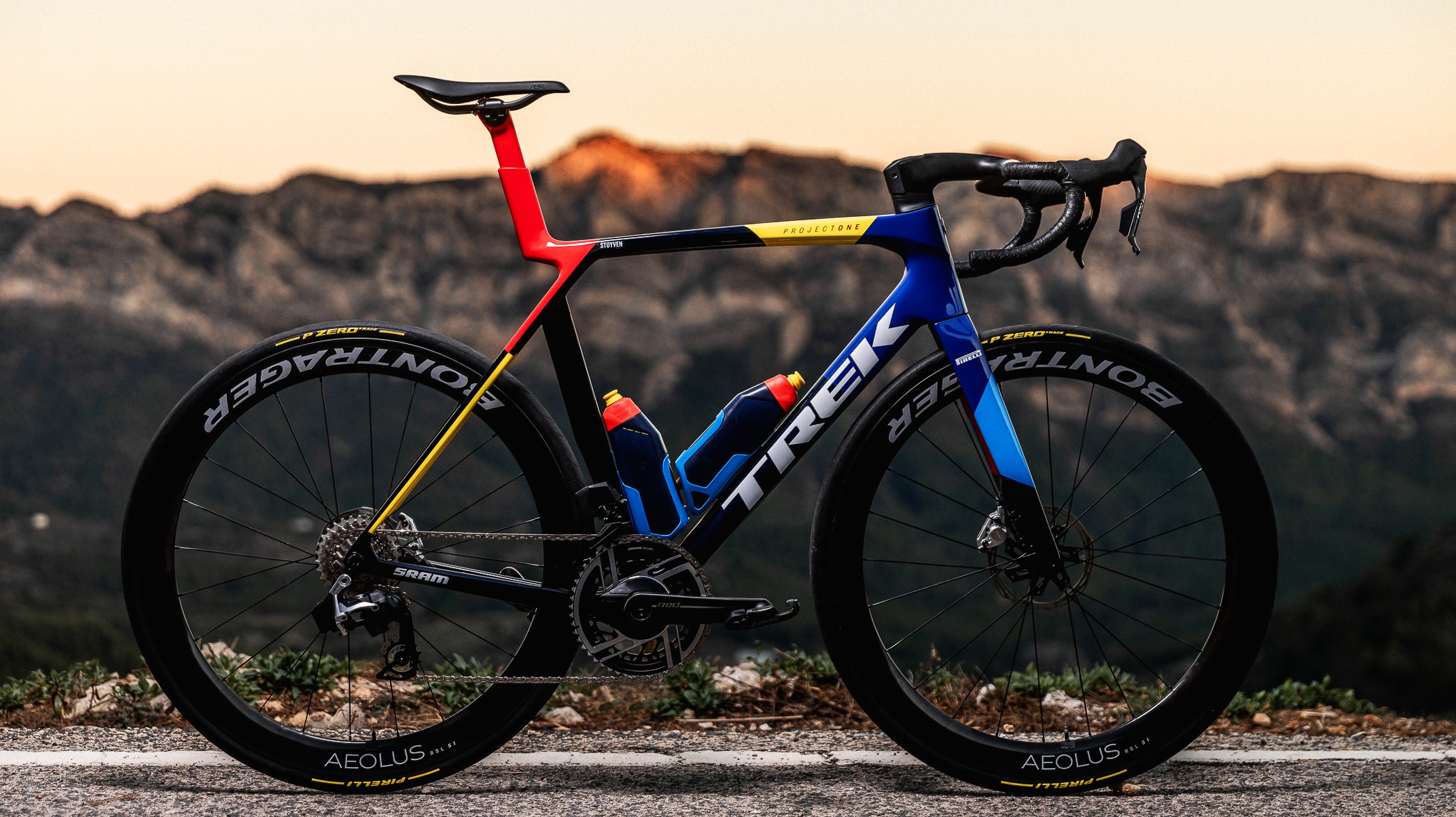
Trek has a broad range of road bike offerings for road and all-road performance. Add to that a time trial and triathlon bike, plus a broad range of cyclocross and gravel models with the electric Domane+ to complete the range. Trek’s bikes perform well for a wide range of riders, in part thanks to the inclusion of their vibration-dampening IsoSpeed and new IsoFlow technology to bring comfort to otherwise stiffer carbon bikes. You can often find the brand in our roundups of the best road bikes, best gravel bikes, best ebikes, best aero bikes and more.
Its bikes are developed with sponsorship of the Lidl-Trek WorldTour Men’s and Women’s teams, the development U23 UCI team, the Baloise-Trek Lions and various privateers. These teams have won monuments and grand tours atop several different models of Trek bikes over the last decade or so in various guises. Trek also offers custom paint options on certain models with its Project One customisation tool to make your bike truly unique.
Below you can see our full breakdown of the road offerings from Trek bikes, along with its triathlon/TT offering, plenty of all-road options, and even a drop-bar electric bike. We cover all the available spec options to cater for various different price points as we run down the range.
Quick guide to Trek's road and gravel bike range
Here is a quick summary of the Trek road and gravel bike models.
Madone
The Madone has evolved from an all-rounder, to a dedicated aero bike, and now back again to an all-rounder. It’s Trek’s lightweight and aero-focused race machine with enough compliance for endurance riding thanks to the IsoFlow tech.
Domane
An intriguing mix of aero tubing, IsoSpeed suspension system, lightweight racing pedigree, internal storage and 38mm tyre clearance. It fits in somewhere between an endurance race bike and a gravel-lite bike.
Emonda
Once Trek’s ultra-lightweight offering, but it developed more aero tube shaping as it become a lightweight all-rounder race bike. Now discontinued and superseded by the 8th Gen Madone, but still older stock is still available, offering a versatile all-round platform.
IsoSpeed: Pivots built into the frame that allows a bike to flex with the road to absorb bumps and reduce fatigue
IsoFlow: A derivative of IsoSpeed that also promises aerodynamic improvements
Emonda AL
Fast, fun and affordable is the tagline for this bike. It still offers low weight and aero tubing for a smaller price than the carbon offering, making it the most affordable race bike in Trek’s offering.
Domane AL
Designed to offer all-road versatility without as much race focus as the carbon version. Wide clearance for tyres and multiple mounting points for luggage and storage make it a good value road commuter or endurance bike.
Speed Concept
Both the time trial and triathlon frame offering from Trek. Designed for speed but still features IsoFlow technology to make uncomfortable aero positions more manageable. Aero bottle and storage options aid practicality.
Checkmate
The aero race focussed gravel offering with an all-new Gravel Race geometry with integrated aero handlebars. This is designed for fast-paced gravel, not adventure rides.
Checkpoint
With comfortable geometry, copious mounting points, internal storage and 50mm tyre clearance, this is an all-day (and night) adventure bike for any terrain. Available in carbon and alloy frames.
Boone
Featuring IsoSpeed, aero tubing and lightweight carbon, this bike is similar to the Domane but with geometry designed for sharper handling, the Boone is solely focused on fast-paced CX racing.
Crockett
Made of aluminium and touted as a bike that can be used for CX races but also commuting and gravel adventures. Currently only available as a frameset.
Domane+
Available in both aluminium and carbon models, the Domane+ takes the compliance and aero tubing of the Domane and adds electrical assistance. The carbon variant features a larger motor and IsoSpeed.
- Trek Bikes promo codes: Looking for a discount? We've got a page dedicated to Trek voucher codes and coupons
Trek road bikes
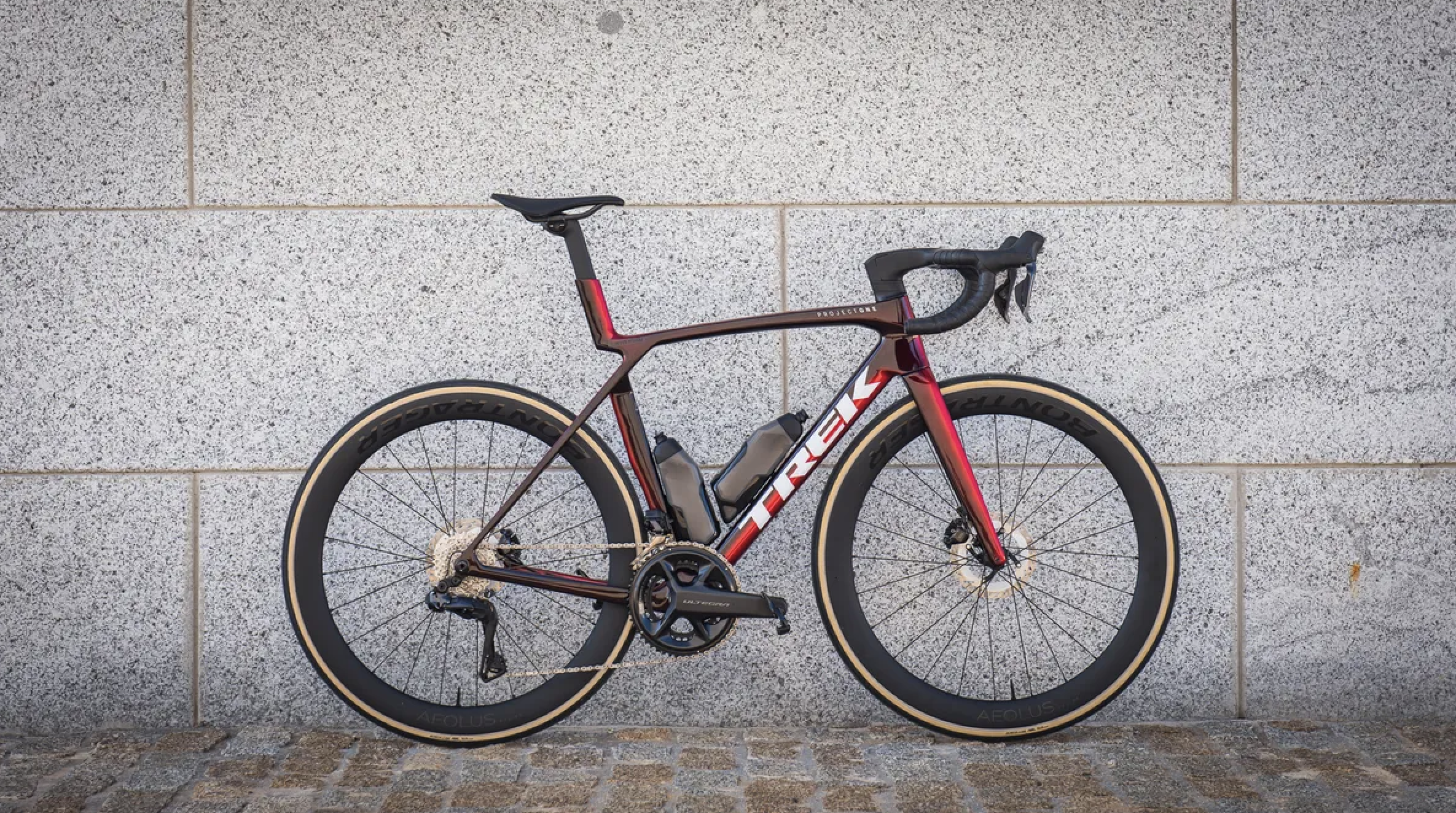
Specifications
Reasons to buy
Reasons to avoid
The Gen 8 version of the Madone performed so well in the wind tunnel while shaving weight down drastically that it unintentionally killed off the Emonda line of lightweight bikes. With a flared one-piece bar and stem combo, aero bottles, and vibration-damping IsoFlow, the bike now hovers on the 7kg mark for the top-spec version in a size medium/large.
In fact, the new Madone was designed to be faster with a rider on the bike, and this showed with are Wind Tunnel shootout for aero bikes, with the Madone coming in among the top performers with a rider onboard. In our testing we found it to feel blisteringly fast with top level power transfer, while that low weight and IsoFlow compliance was very noticeable.
The only downsides we found where that the aero bottles took a bit of getting used to, and are expensive to replace if you drop one. The bike can also become very expensive, especially with Project One custom paint jobs. However the baseline SLR frameset is now £1000 cheaper than the Gen 7 frameset.
Trek Madone Gen 8 SL7: First ride review
Model Range
- Trek Madone SLR 9 AXS Gen 8 (SRAM Red eTap AXS 2nd Generation)
- Trek Madone SLR 9 Gen 8 (Shimano Dura Ace Di2)
- Trek Madone SLR 8 AXS Gen 8 (SRAM Red eTap AXS 1st Generation)
- Trek Madone SLR 7 Gen 8 (Shimano Ultegra Di2)
- Trek Madone SLR 7 AXS Gen 8 (SRAM Force eTap AXS)
- Trek Madone SL 7 Gen 8 (Shimano Ultegra Di2)
- Trek Madone SL 6 AXS Gen 8 (SRAM Apex eTap AXS)
- Trek Madone SL 6 Gen 8 (Shimano 105 Di2)
- Trek Madone SL 5 Gen 8 (Shimano 105 Mechanical)
- Trek Madone SLR Gen 8 Frameset

Specifications
Reasons to buy
Reasons to avoid
The Domane has become a bit of a jack of all trades bike beyond the usual quest for aero and lightweight. With 38mm tyre clearance and new simplified IsoSpeed vibration dampening, it represents an aero, reasonably lightweight, all-road classics bike with internal storage options (on all but the RSL model).
The Domane is an endurance road bike, so features slacker geometry than Trek’s race orientated Madone line. Along with the IsoSpeed and wide tyre clearance, this bike is ideally suited to the vast majority of riders where exceptionally long reach and high drop are not going to be optimal. We also appreciated the semi-integrated front end which allows for easier front end adjustments.
The comfort however is not as plush as it once was, and even with simplified IsoSpeed, the price has ballooned to £6950 for the entry level model. This comes with 105 Di2, but is still a lot. The top spec price has dropped this year, but £11270 is a high price for an endurance bike.
Model Range
- Domane SLR 9 AXS Gen 4 (SRAM Red eTap AXS 2nd Generation)
- Domane SLR 9 Gen 4 (Shimano Dura Ace Di2)
- Domane SLR 8 AXS Gen 4 (SRAM Red eTap AXS 1st Generation)
- Domane SLR 7 AXS Gen 4 (SRAM Force eTap AXS)
- Domane SLR 7 Gen 4 (Shimano Ultegra Di2)
- Domane SLR 6 AXS Gen 4 (SRAM Apex eTap AXS)
- Domane SLR 6 Gen 4 (Shimano 105 Di2)
- Domane RSL Gen 4 Frame
- Domane SLR Gen 4 Frame
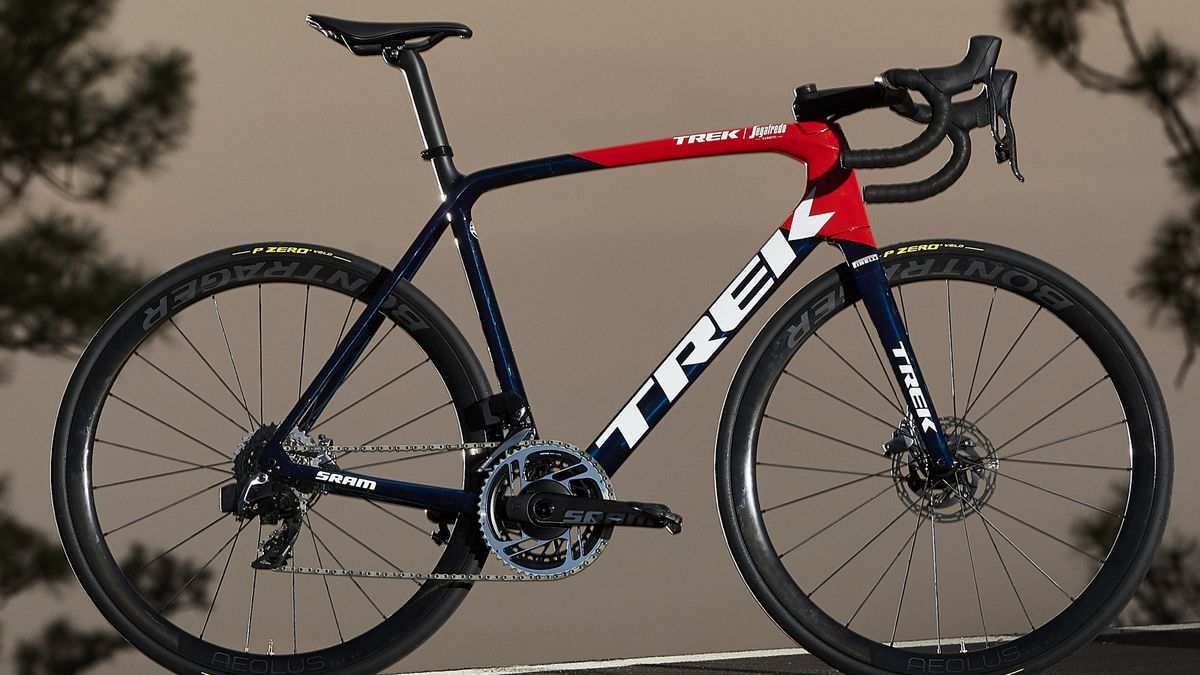
Trek Emonda
Specifications
Reasons to buy
Reasons to avoid
The Trek Emonda was the brand’s dedicated climbing bike for nearly a decade.
Originally a round-tubed and super lightweight bike designed for going up hills fast. In this, its last iteration, it underwent an aero transformation to offer reduced drag while still being light.
Trek has said that the new Gen 8 Madone was originally slated to be the new Emonda, but given the aero performance was better than the Generation 7 Madone while being lighter than the outgoing Emonda, the convergence of models into one Madone was a no-brainer.
Two options are still available though, with the SLR and SL sharing the same H1.5 race geometry, but with different weights of carbon fibre used to reduce weight in the SLR line. As the model has reached the end of its life now though, availability is limited.
Model range
- Emonda SLR 7 (Shimano Ultegra Di2)
- Emonda SLR 6 (Shimano 105 Di2)
- Emonda SL 7 (Shimano Ultegra Di2)
- Emonda SL 6 (Shimano 105 Di2)
- Emonda SL 5 (Shimano 105 mechanical)
- Emonda SLR Frameset
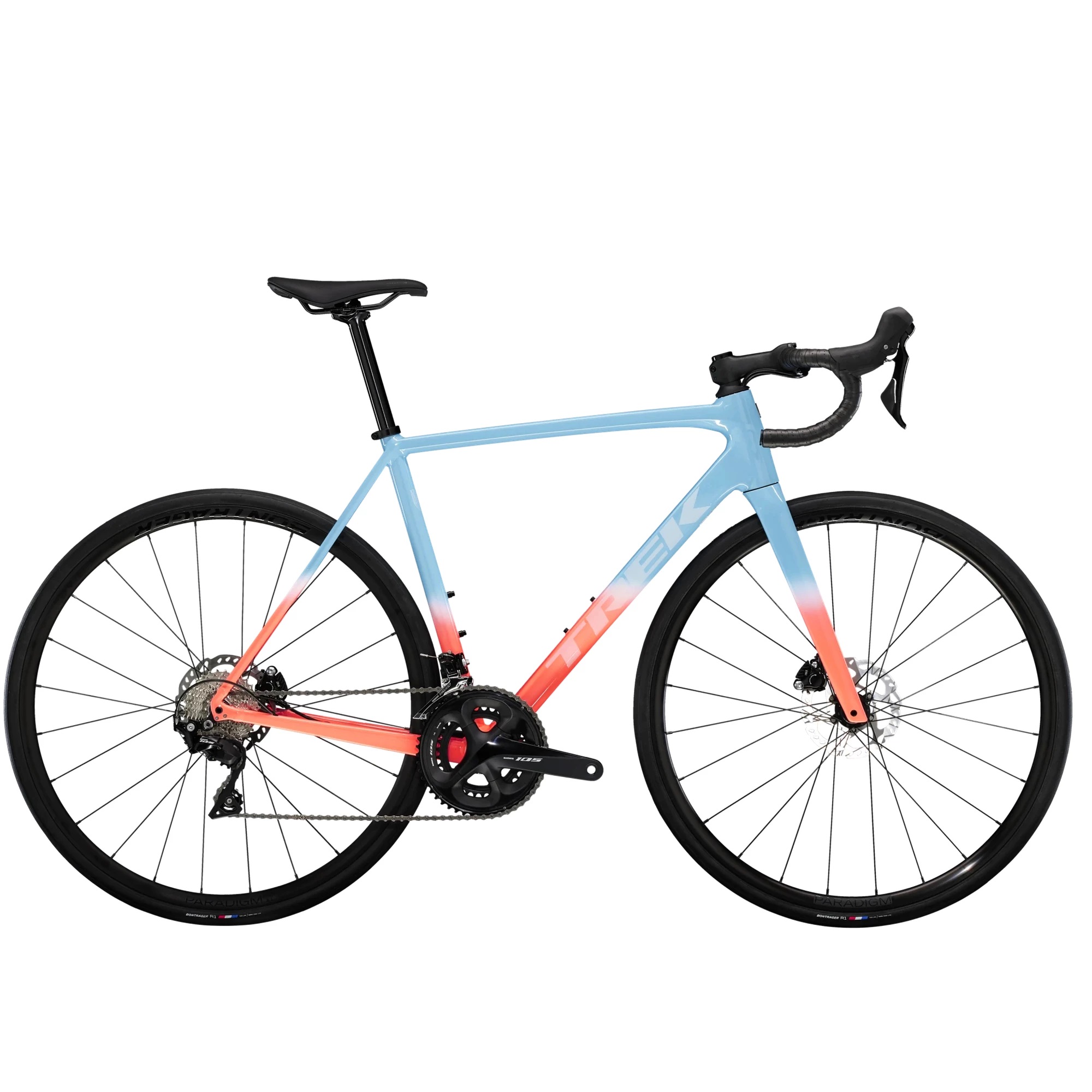
Trek Emonda ALR
Specifications
Reasons to buy
Reasons to avoid
Now in its third generation, the Emonda ALR is, as Trek says, its best-value performance road bike. Using Trek’s 300 Series Alpha Aluminium with Invisible Weld technology to trim weight, with a carbon fibre fork. The bike also features a race geometry that is more geared towards that classic long and low fit. In fact, it’s the same H1.5 geometry as the Trek Madone aero race bike.
The frame now features some aero tube shaping along with internal cable routing, leaning fully into that alloy race bike category. The T47 threaded bottom bracket has also been adopted, eliminating the common BB90 creaking that had come to plague a lot of Trek bikes. It also comes equipped with the highly capable and great-value Shimano 105 mechanical and Di2 groupsets.
With Di2 shifting and a reasonable weight for an alloy disc brake bike, the bike represents solid value. The wheels are not the lightest, but they're an easy upgrade if you want to save weight down the line.
Model range
- Emonda ALR 6 (Shimano 105 Di2)
- Emonda ALR 5 (Shimano 105 Mechanical)
- Emonda ALR Frameset

Trek Domane AL
Specifications
Reasons to buy
Reasons to avoid
The fourth generation Domane AL drops weight from the previous generation and comes with a host of features to make it a versatile all-road and road bike. It uses the brand’s 100 Series Alpha Aluminium with a carbon fibre IsoSpeed fork to assist in vibration dampening. Add to that tyre clearance of up to 38mm and you have potential for a very cushioned ride.
The Domane AL uses Trek’s endurance geometry giving a more relaxed and upright position while allowing for responsive handling for low speed technical terrain. Other ergonomic features include the flared handlebars with 4cm wide drops to tops. While cable routing is semi-integrated for easier position adjustments, but still awkward headset bearing replacements.
To really boost the all-road capability, the bike also features copious mounting points for panniers, mudguards, and storage. All this does add to the overall weight, which at nearly 10kg is getting on a bit. But for commuting and adventure riding on a budget, it’s a good option to consider. However, similarly specified alloy road bikes are available for those not as fussed about the all-road capabilities.
Model range
- Domane AL 5 Gen 4 (Shimano 105 Mechanical)
- Domane AL 4 Gen 4 (Shimano Tiagra 10-speed)
- Domane AL 2 Gen 4 (Shimano Claris 8-speed)
- Domane AL 2 Rim brake (Shimano Claris 8-speed)
Trek Speed Concept
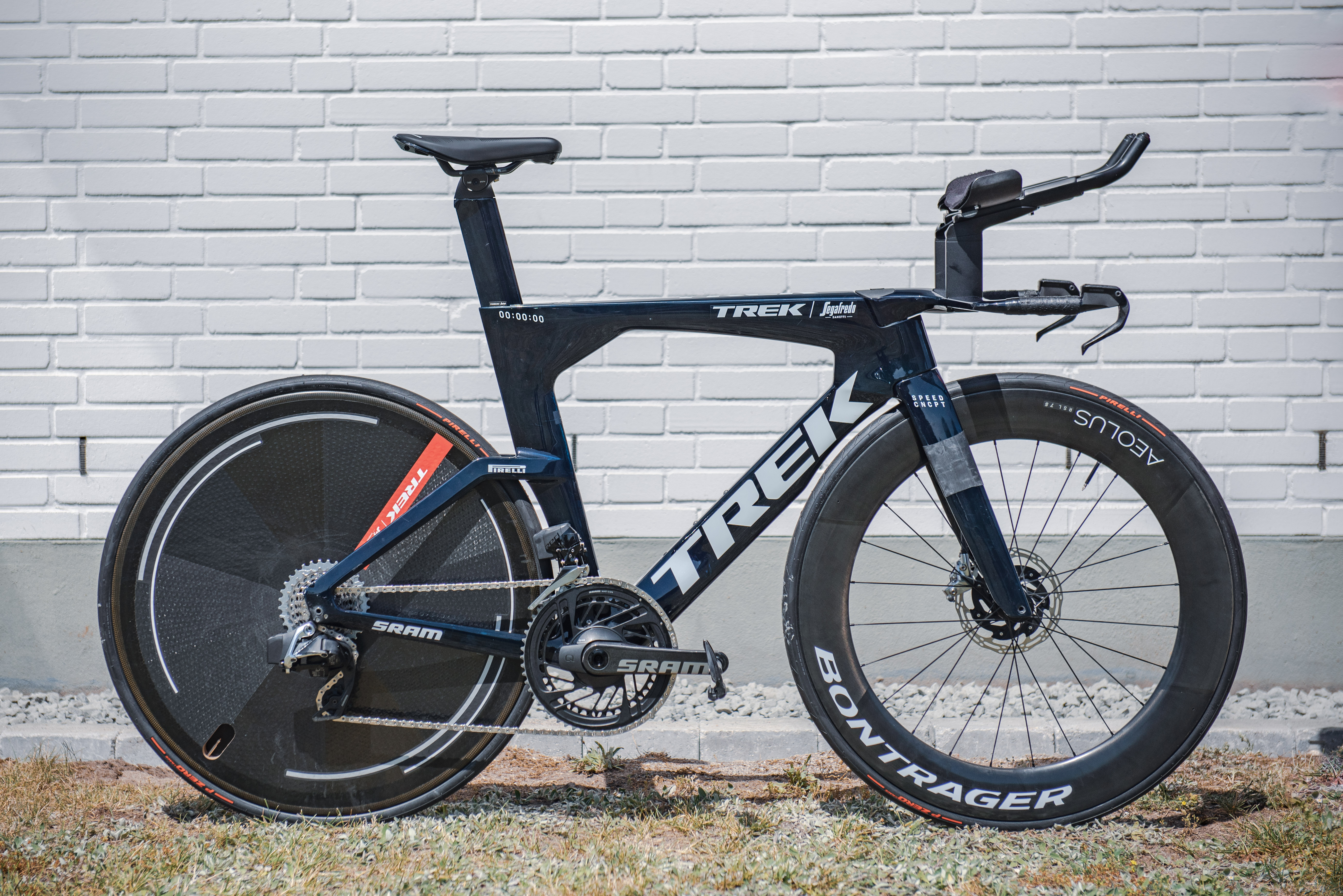
Trek Speed Concept
Specifications
Reasons to buy
Reasons to avoid
The Trek Speed Concept is available in two variations, the triathlon-focused IsoSpeed equipped version with internal storage, and the all stiffness and aero speed merchant which is the more expensive TT-specific version. Both versions feature the same virtual Kamm tail tubing and 800 Series carbon fibre, and come with the brand’s proprietary bar and extensions.
Price-wise, framesets start at a whopping £5825, with a complete Ultegra Di2 build coming in at £8450. Time trial bikes are often very expensive, but the Trek takes some beating for entry-level price point. The supplied wheels are not particularly aero-orientated either: at just 51mm deep, they're more akin to everyday road use.
The internal storage, hydration options, and aero bottle with the triathlon frame do boost practicality and are great for long-distance Time Trials. But the fact is this all comes at a very high price. Trek claims it’s six minutes faster than the last model over Ironman distance, and with a lot of promised fit adjustability. The value of that will depend on the buyer.
Model range
- Speed Concept SLR 9 AXS (SRAM Red eTap AXS)
- Speed Concept SLR 9 (Shimano Dura Ace Di2)
- Speed Concept SLR 8 AXS (SRAM Force eTap AXS)
- Speed Concept SLR 7 AXS (SRAM Apex eTap AXS)
- Speed Concept SLR 7 (Shimano 105 Di2)
- Speed Concept SLR Frameset
- Speed Concept TT Frameset
- Speed Concept Rim Frameset
Trek gravel bikes
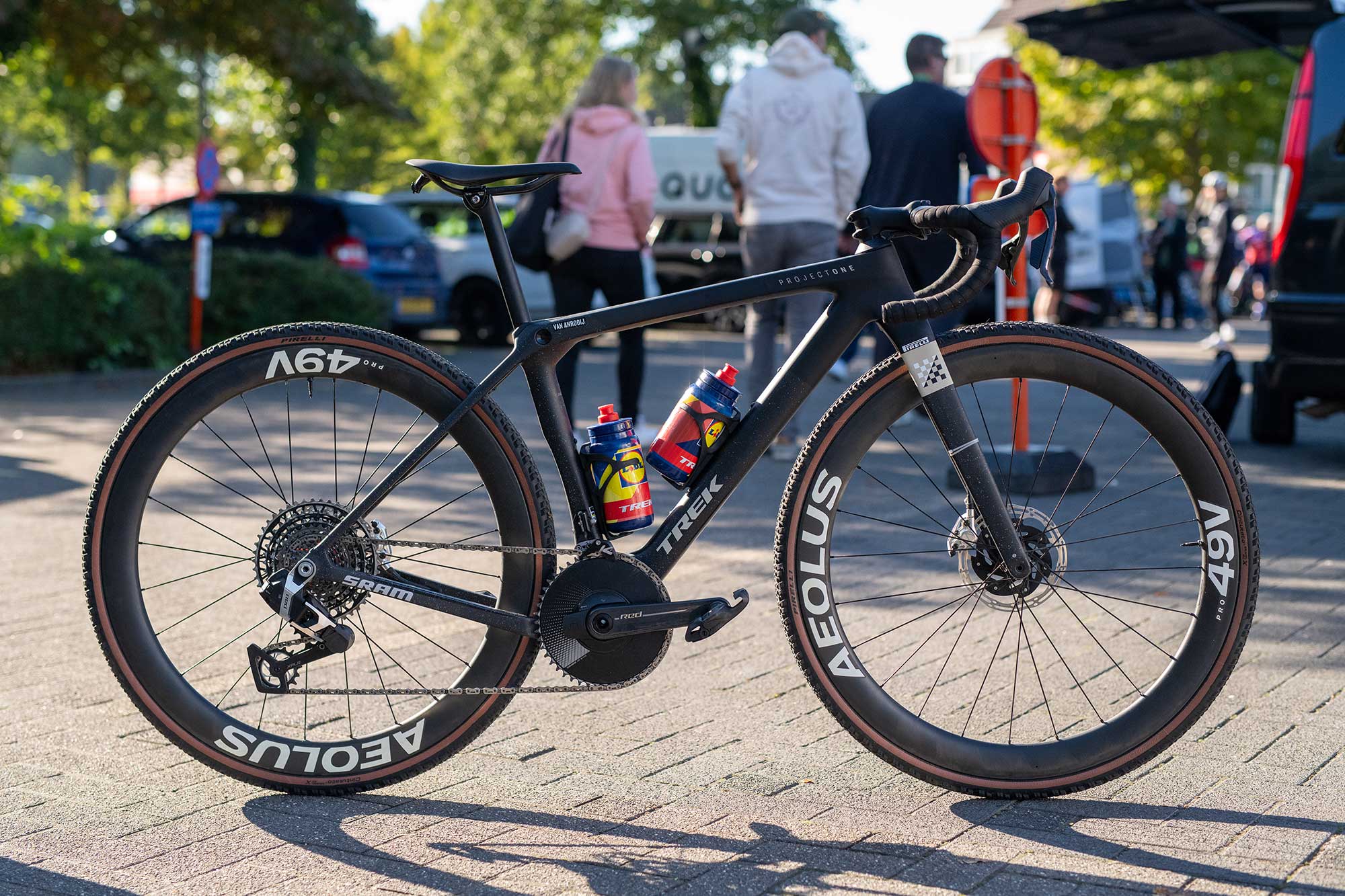
Trek Checkmate
Specifications
Reasons to buy
Reasons to avoid
The Checkmate represents Trek’s move into the niche but growing gravel racing market where aero and lightweight need to blend with comfort and practicality. The bike has shed 445g from the top-of-the-line Checkpoint SLR in part thanks to OCLV 800 Series carbon, Trek’s premium material.
The IsoSpeed dampener is still present for added compliance and comfort, as are mounting points. However, aero takes over with the same 3cm flared one-piece bar/stem as the Madone and the same ride and bike as a complete package aero methodology, ‘Full System Foil Technology’ and H1.5 geometry. Even the storage solutions are aero-orientated, and there are fewer mounts than the now endurance-focused Checkpoint.
Tyre clearance has dropped a little though, now 45mm maximum and 38mm tyres are supplied as standard, conservative but very much race-focused. Also, with only SLR models being available, the starting price is a whopping £8500 for a full build. Project One customisation adds to that price even further. If you are gravel racing and speed is your primary focus, this is a very suitable bike. But those looking more for adventure and practicality over flat-out speed should opt for the Checkpoint.
Model range
- Checkmate SLR 9 AXS (SRAM Red eTap AXS XPLR 2nd Generation)
- Checkmate SLR 8 AXS (SRAM Red eTap AXS XPLR 1st Generation)
- Checkmate SLR 7 AXS (SRAM Force eTap AXS XPLR)
- Checkmate SLR Frameset
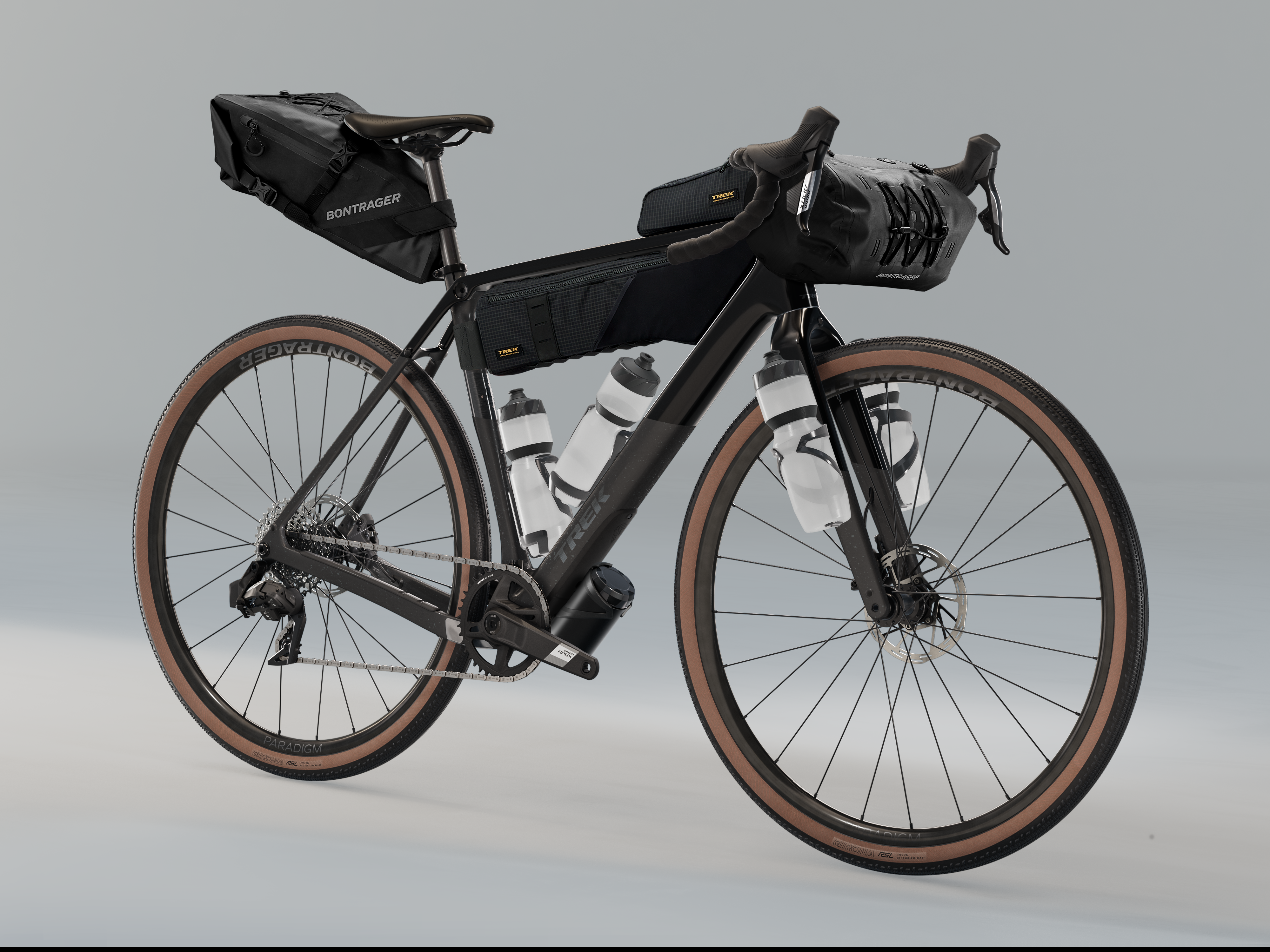
Trek Checkpoint
Specifications
Reasons to buy
Reasons to avoid
The Checkpoint is now in its third generation, and with the introduction of the Checkmate, gone are the more aero-focused tube shapes and the latest Checkpoint gets an endurance focus instead. A new geometry has been adopted to give a more comfortable position for all-day gravel riding, and new tube shaping has made room for larger bottles to be mounted along with a frame bag in the main triangle.
Price is also a consideration with Trek’s 500 series carbon being used to keep costs down without impacting stiffness, but adding a little weight. Max tyre clearance has also been beefed up from 45mm to 50mm, with an internal storage compartment for tools and spares. There are also new handlebars available with full builds featuring a large 6cm flare for better control over rougher surfaces.
IsoSpeed and multiple mounting points also boost the bike’s promised endurance capacity. Builds start with Rival AXS XPLR at £3700, giving modest value to performance and supplied components, and with no SLR version available, the maximum price ceiling has dropped.
Model range
- Checkpoint SL 7 AXS Gen 3 (SRAM Force eTap AXS D2)
- Checkpoint SL 6 AXS Gen 3 (SRAM Rival eTap AXS)
- Checkpoint SL 5 AXS Gen 3 (SRAM Apex eTap AXS XPLR)
- Checkpoint SL Frameset Gen 3
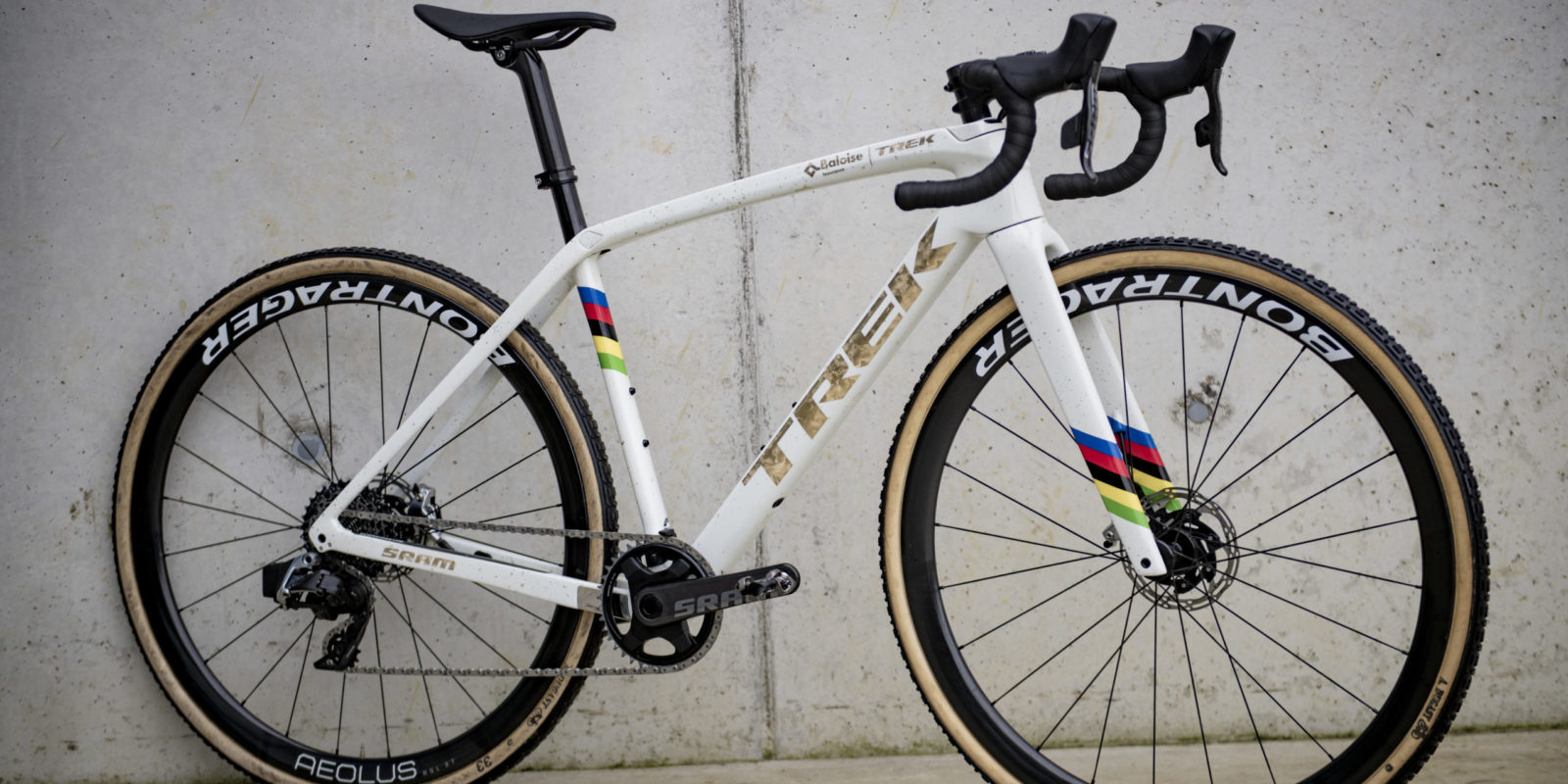
Trek Boone
Specifications
Reasons to buy
Reasons to avoid
The Trek Boone is the brand’s racing cyclocross frame raced the super prestige victories and World Titles in the hands of Lucinda Brand. The bike features semi-aero tube profiles much like the Trek Domane and uses a very similar IsoSpeed vibration dampener around the seat tube joining area.
Trek have also included their semi-integrated cable management system the same as the Emonda and Domane which aims to make life a bit easier than fully integrated setups. However, for a CX bike this isn’t particularly optimal. For one, race speeds are slower so gains are relatively smaller. For another, CX bikes are subjected to lots of mud, filth, and often jet washing, so bearing life spans are often far more limited. This makes any integrated headset quite a pain mechanically.
The Boone is currently offered in only one complete build option with SRAM Apex mechanical, while all other options are frameset only. For fast paced CX racing, or taking off on light gravel adventures with the 38mm tyre clearance.
Model range
- Boone 5 (SRAM Apex)
- Boone frameset
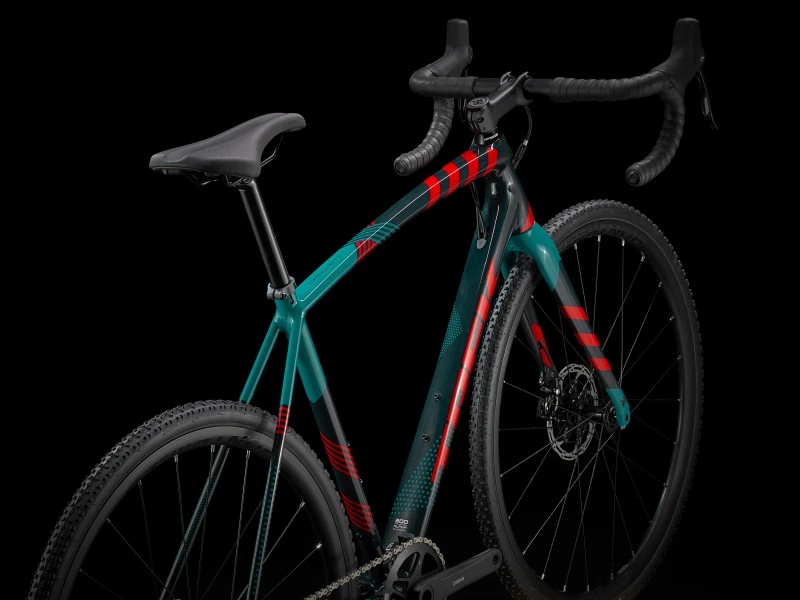
Trek Crockett
Specifications
Reasons to buy
Reasons to avoid
The Trek Crockett is the brand’s alloy-framed cyclocross option and has been designed to be quick, nimble, and agile for CX racing. It’s quite frankly a fairly no-thrills affair but does what it’s designed to do for a good price. The IsoSpeed fork should provide some vibration dampening for improved comfort.
Currently, the Crockett is not available in any full build options, and comes only as a frameset. External cabling and no internal headset routing do make it easy to live with from a mechanical point of view. However, the lack of any mounting points or tyre clearance above 38mm does limit it to mainly CX use.
Model range
- Crockett Disc Frameset
Trek e-bikes
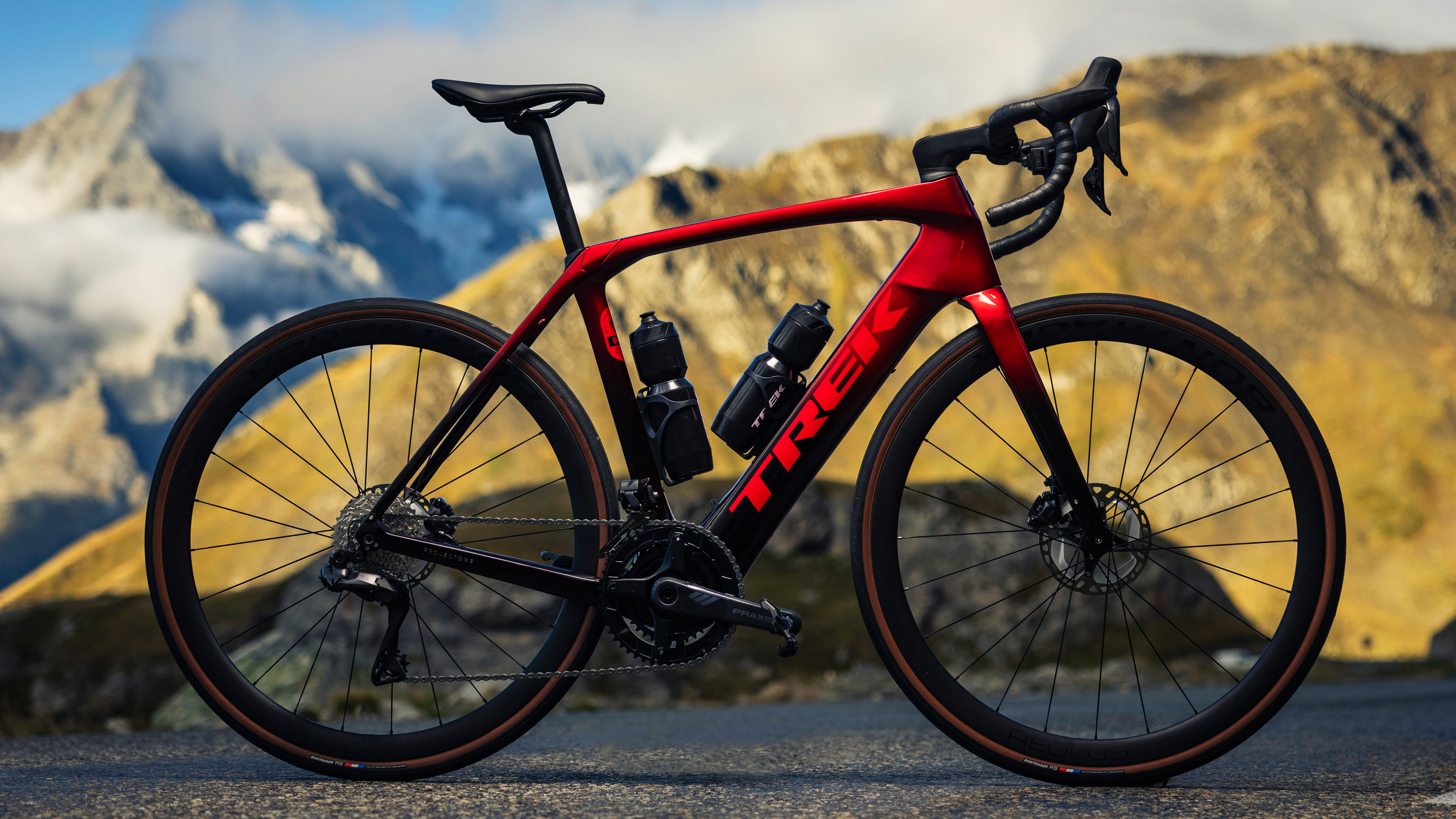
Trek Domane+
Specifications
Reasons to buy
Reasons to avoid
The Domane+ takes the standard Domane platform designed to be fast but comfortable both on roads and off, and adds an electric motor to the mix. Higher specification models use a TQ-HPR50 with 250w motor with 300w peak and 360Wh battery, while lower-end models use the Fazua Evation 250w motor and 250Wh battery. Given batteries degrade over time, the replaceable batteries help to improve the bike’s longevity as well as resale value.
The Domane+ also boasts 38mm tyre clearance, plenty of mounting options for fenders or storage, plus Trek’s Blendr accessories making it a versatile and capable bike on the road or for more off-road adventuring.
The top-end models go for as much as £11,750 with Dura-Ace Di2 groupsets. However, the alloy versions are significantly cheaper at £3050 starting price with Shimano 105 11-speed mechanical but for a weight penalty in the region of 1.5kg.
You can find the Domane+ as part of our best electric road bikes guide.
Model range
- Domane+ SLR 9 (Shimano Dura Ace Di2)
- Domane+ SLR 9 AXS (SRAM Red eTap XPLR AXS 12spd 2nd Generation)
- Domane+ SLR 8 AXS (SRAM Red eTap AXS)
- Domane+ SLR 7 AXS (SRAM Force eTap AXS XPLR)
- Domane+ SLR 6 AXS (SRAM Rival eTap AXS XPLR)
- Domane+ SLR 7 (Shimano Ultegra Di2)
- Domane+ SLR 6 Pro (Shimano 105 Di2)
- Domane+ AL 5 (Shimano 105 12spd Mechanical)
- Domane+ AL 5 (Shimano 105 11spd Mechanical)
Trek explained
Trek road bike and gravel bike range explained
With Trek offering such a large range of different bikes with different performance targets, its bikes range in their geometry and material use. The brand’s bikes cater for the most serious racers, adventure seekers, time triallists, aspiring amateurs, and gravel speedsters.
Trek’s road racing range now uses a universal H1.5 geometry to allow a more aero position without compromising comfort, while its all-road ranges feature more upright and relaxed geometries.
The brand doesn’t feature women’s specific models, instead opting for a broader size range and more finishing kit alternatives to cater for different body shapes and geometries. The men’s and women’s Lidl-Trek teams both ride the same bikes after all.
Most of Trek’s bikes come in a range of offerings to cater for budget. The SLR lines are more expensive and feature lighter-weight carbon fibre, while numbers dictate the level of spec on offer (the higher the better). For example, the SLR 9 will be a better specification than the SLR 7. While the SL features heavier carbon, but almost all the same performance level for a lower price.
Who are Trek?
Trek has become one of the biggest players when it comes to the bike industry since its inception in 1976 in Wisconsin, USA. Founders Bevil Hogg and Dick Burke started by trying to form a bicycle shop chain, but then decided to switch to the manufacture of quality bicycles in the USA. Trek was named for its synonymous feeling of travel and adventure.
Decades later, the head factory is still located near the original barn where the brand was incepted. But whereas it started making around 900 frames a year, Trek now boasts an annual revenue of $1 Billion with 1800 employees.
Trek is a pioneer of widespread use of compliance in racing bicycles with the likes of IsoSpeed and now IsoFlow, as well as introducing moulded monocoque carbon fibre frames in the late 80s. It has held the hour record, won the Tour de France, World titles, Olympic medals, and anything else you can think of.
It has, over the years, expanded to provide components such as wheels, helmets, clothing, shoes and finishing kit under the Bontrager name - after legendary motorcycle racer and mountain biker Keith Bontrager - but has recently started to bring everything under one ‘Trek’ roof.
Trek bicycles can be found in many bike stores across the globe, as well as with online retailers, making them highly accessible as a starting bike or someone’s dream halo build.
Get The Leadout Newsletter
The latest race content, interviews, features, reviews and expert buying guides, direct to your inbox!
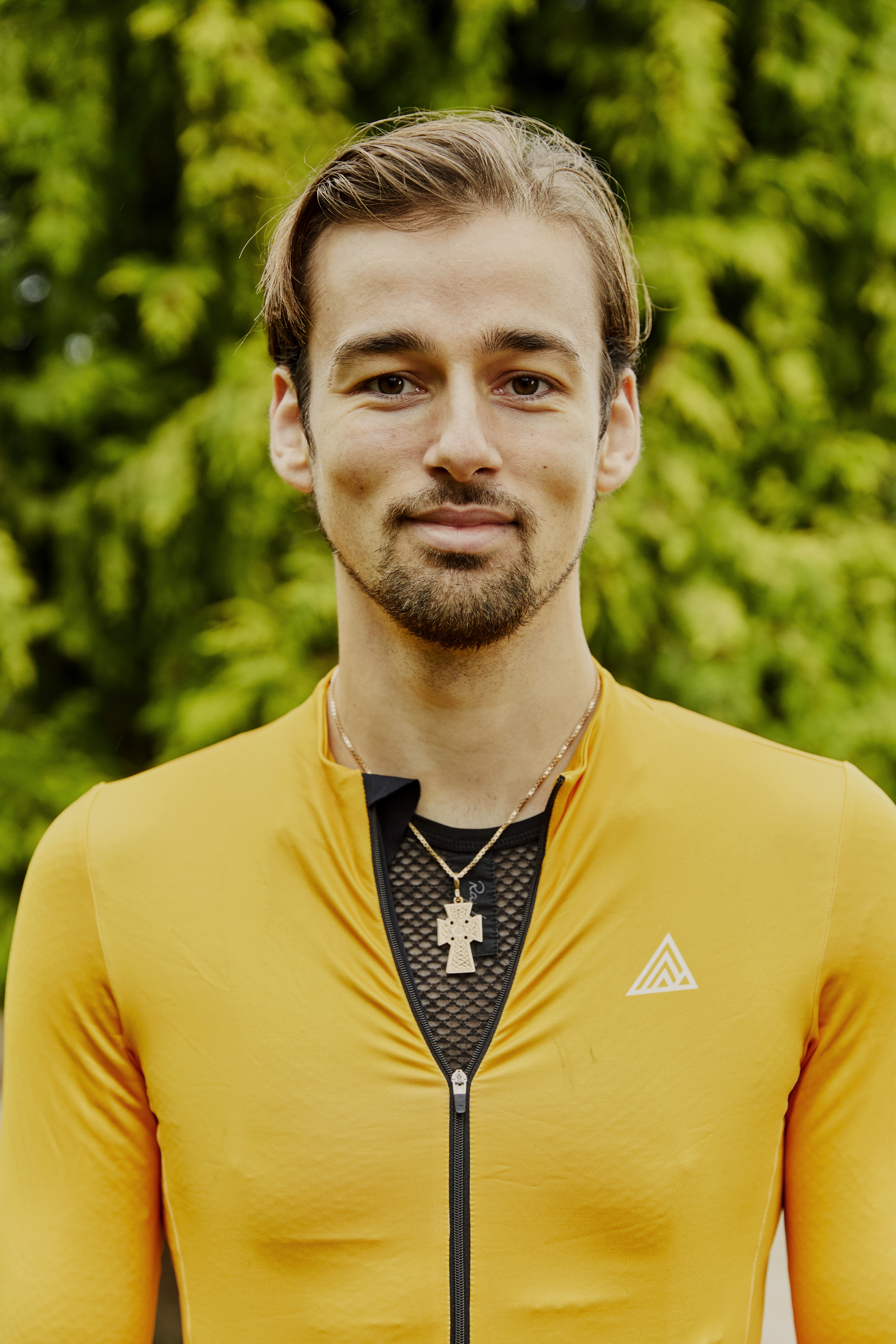
Freelance cycling journalist Andy Turner is a fully qualified sports scientist, cycling coach at ATP Performance, and aerodynamics consultant at Venturi Dynamics. He also spent 3 years racing as a UCI Continental professional and held a British Cycling Elite Race Licence for 7 years. He now enjoys writing fitness and tech related articles, and putting cycling products through their paces for reviews. Predominantly road focussed, he is slowly venturing into the world of gravel too, as many ‘retired’ UCI riders do.
When it comes to cycling equipment, he looks for functionality, a little bit of bling, and ideally aero gains. Style and tradition are secondary, performance is key.
He has raced the Tour of Britain and Volta a Portugal, but nowadays spends his time on the other side of races in the convoy as a DS, coaching riders to race wins themselves, and limiting his riding to Strava hunting, big adventures, and café rides.